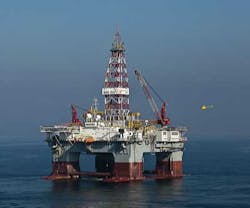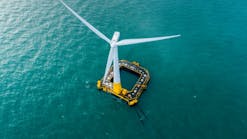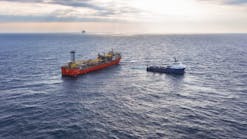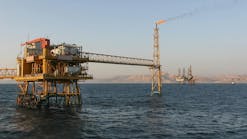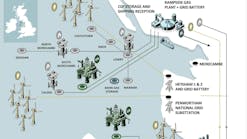Nick Terdre
Contributing Editor
As the arctic opens to oil and gas exploration and production, StatoilHydro intends to play an active role. As part of its preparations, the company has developed a drillship design for the area.
"Our main purpose is not necessarily to build the ship but to show the feasibility of the design," says StatoilHydro vice president, Stein Olav Drange, who as R&D program leader headed the project. This was not just a desktop study, he adds. It also included a series of model tank tests at the Hamburg Ship Model Basin in Germany to verify aspects of the design. This resulted in some significant modifications.
An outline specification has been developed for the vessel, with an emphasis on the marine aspects of the design. This will provide important knowledge about requirements in the arctic when the company comes to discuss assignments with drilling contractors.
Key competence on ship design was brought to the project by Bergen-based naval architect LMG Marin. Among the main challenges of arctic operations are ice-breaking, station-keeping, and working in remote locations. The design requirements included operating in ice thicknesses in excess of 2 m (6.56 ft) level ice, and for a period of up to six months without the need for re-supply.
Station-keeping is relevant as much of the arctic waters are relatively shallow. Compared with deeper waters, there is much less margin for allowing the drilling riser to deviate horizontally before the integrity of the connection to the wellhead is threatened. The impact of floating ice exerts a force on the vessel which, unless countered, will have the effect of moving it from its position.
For this reason the design incorporates a retractable turret in the bottom of the hull enabling the vessel to be moored to the seabed when operating in shallow waters – up to about 350 m (1,148 ft), according to Drange. For deeper locations, a dynamic positioning system would probably be used to maintain station.
Where possible, ice will be avoided – for example, by scheduling drilling when waters are open. But circumstances may detain the ship beyond the end of the open-water season – for example, if the original well runs into problems and a relief well has to be drilled.
Mitigating measures such as deploying an ice-breaker may be taken. While this may reduce the size of the ice floes heading for the drillship, it will not necessarily stop them altogether. So the drillship must be prepared for ice impact.
To give the ship added protection against ice, the design incorporates a double-ended hull. Ice impact will preferably be taken on the stern, which is designed for extreme ice loads. When moored to the seabed, the ship will be able to adjust its heading in response to approaching ice by rotating a few degrees around the turret. The design incorporates six thrusters for this purpose, three at the stern and three in the bow area. Part of the research was devoted to identifying the optimal locations for the thrusters.
The shape of the stern is also important in terms of its response to ice impact, and model tests showed that a reduced rake angle compared with a conventional drillship proved more effective.
StatoilHydro has designed a drillship for use in arctic operations.
Remote operations
Another requirement for the drillship is autonomy – the length of time it can operate in remote waters without needing fresh supplies. This is not like the North Sea, where a supply ship can come out to a rig in a matter of hours, says Drange. Instead, serving a remote location will be a costly affair, so the number of supply trips needs to be minimized.
This was one important reason for choosing a drillship over a semisubmersible – there is a lot more space for storing equipment and supplies. To achieve six months’ operation without re-supply means being capable of carrying large stocks of drillstring, drilling mud, fuel and other consumables, and being able to store six months’ volume of drill cuttings, given the assumption of zero emissions which already applies, for example, in Norway’s Barents Sea.
The project drew on the competence of Norwegian drilling contractor Odfjell Drilling to size the vessel. The resulting design is a ship with large dimensions, including a length of over 210 m (689 ft).
The R&D project, which took around three years, was funded on a 50/50 basis by LMG Marin and StatoilHydro. It now is complete, although associated work such as modeling of ice loads continues.
StatoilHydro’s arctic research also has a focus on the environment – investigating what technology is needed for handling oil spills, and the influence of petroleum activities on arctic eco-systems.
The company’s main arctic activities at present are in the ice-free southern Barents Sea, where it operates the Snøhvit gas field and has an active exploration program. It is one of the partners in the Shtokman development in the Russian Barents Sea and has exploration acreage in the Chukchi Sea – in both these areas ice is an issue. Ice is also present in the northern Barents Sea, for example around Svalbard and Jan Mayen Island, areas that may be opened up to exploration in the future.

